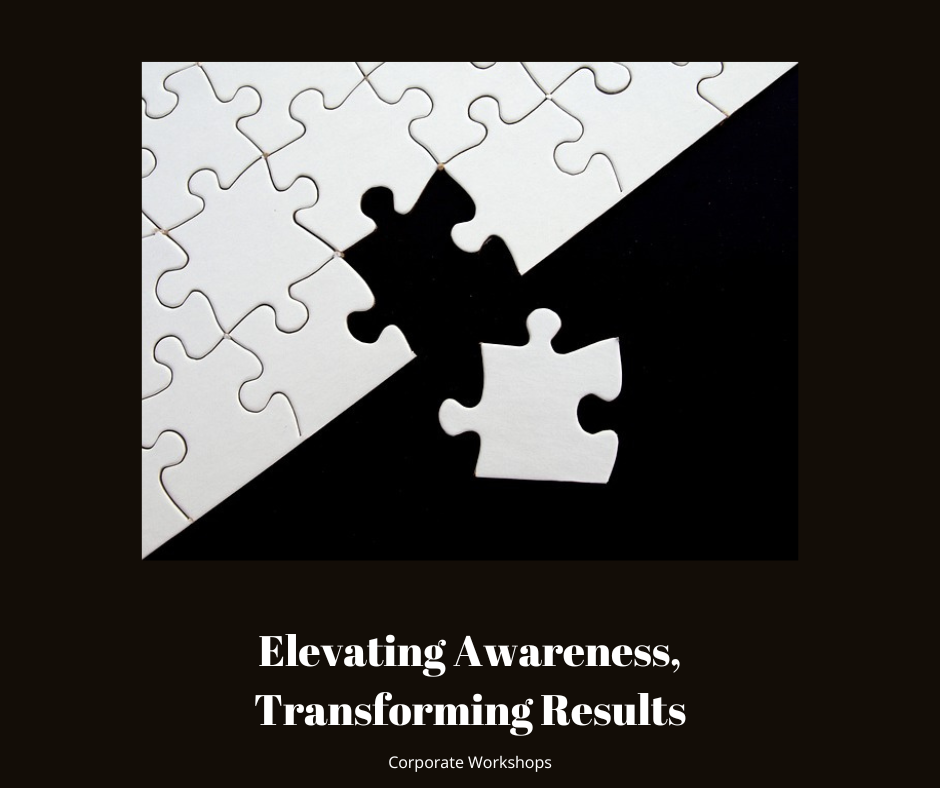
Corporate Workshops: Elevating Awareness, Transforming Results


In today’s high-pressure business environment, mental well-being is not just important - it’s foundational to success. Leaders today are navigating unprecedented complexity, where the ability to manage not only tasks but also the intricate dynamics of human interaction is more crucial than ever.
Unlike typical corporate trainings that focus on surface-level strategies, my workshops and speaking engagements delve deep into the hidden forces that truly shape every interaction at work - your team’s thoughts, feelings, and unconscious conditioning. These are the unseen elements that, when understood, can positively transform the entire team dynamic
When individuals in an organization become aware of their own conditioned responses, judgment patterns, and emotional reactions, they begin to interact with more clarity, empathy, and emotional resilience. This not only enhances personal well-being but significantly elevates team collaboration, communication, and problem-solving abilities.

Corporate Workshop: Foundations of Awareness:
Understanding the Mind for Lasting Change
Workshop Format:
Day 1: 4-hour session
Part 1: Understanding Conditioning (2 hours)
Part 2: The Nature of Thought (2 hours)
Day 2: 4-hour session (one week later)
Part 3: The Separate Self (2 hours)
Part 4: Awareness and Allowing (2 hours)
Breakdown:
Theory: Introduction to key concepts and foundational ideas.
Practical Application: Real-world examples illustrating how these concepts influence decision-making, interactions, and behaviors in everyday life or work settings.
Interactive Exercise: Group activity where participants identify common patterns or perspectives and explore how these might affect their day-to-day experiences and dynamics.
Reflection & Discussion: Facilitated discussion where participants share insights and personal experiences related to the concepts, encouraging deeper understanding and exploration.

Day 1: Exploring Conditioning and the Nature of Thought
Part 1: Understanding Conditioning (2 hours)
Objective:
To help participants recognize how societal, cultural, and personal conditioning shapes their perception of reality, influencing their behavior and interactions.
Breakdown:
Theory: Introduction to the concept of conditioning. How society, culture, and past experiences form an invisible lens that filters our perception of events and people.
Practical Application: Real-world examples of how conditioning influences decision-making, relationships, and reactions in the workplace.
Interactive Exercise: Group activity to identify common beliefs or biases and explore how they might affect day-to-day work dynamics.
Reflection & Discussion: Facilitated discussion where participants share insights and experiences related to their own conditioning.
Key Takeaway:
By becoming aware of these conditioned patterns, participants can start making conscious choices rather than reacting automatically, leading to greater clarity and less internal and external conflict.
___________________________
Part 2: The Nature of Thought (2 hours)
Objective:
To demonstrate how thoughts are transient and shape our emotional states, often leading to stress or conflict when left unexamined.
Breakdown:
Theory: Explanation of the nature of thought—its fleeting, impermanent, and often deceptive qualities.
Practical Application: Exploration of scenarios where unexamined thoughts impact emotions and decisions, such as managing deadlines, giving feedback, or handling workplace conflict.
Guided Exercise: An exercise where participants observe their own thoughts in real-time to see their impermanence and lack of inherent truth.
Coaching & Q&A: Open floor for participants to bring up real-life situations they wish to explore further.
Key Takeaway:
Participants will start to see how believing every thought as truth creates stress and how recognizing thoughts as temporary can lead to more clarity and emotional resilience.

Day 2: Unpacking the Separate Self and Finding Freedom in Awareness
Part 3: The Separate Self (2 hours)
Objective:
To challenge the notion of a fixed, separate identity and explore how this concept creates stress and limits authentic interactions.
Breakdown:
Theory: Introduction to the concept of the “separate self” and how it is often an illusion created by thought. Discussion on the role of the “self” in stress, anxiety, and conflict.
Practical Application: Examples of how clinging to a rigid sense of identity impacts leadership, collaboration, and adaptability in the workplace.
Experiential Exercise: A guided practice where participants investigate the nature of their own identity, noticing how the sense of “I” arises and dissolves.
Reflection & Discussion: Participants share their experiences, exploring the freedom that comes with loosening the attachment to a fixed self.
Key Takeaway:
Understanding that the “self” is not a fixed entity allows for more flexibility, creativity, and openness in work and relationships, leading to a more connected and peaceful way of being.
___________________________
Part 4: Awareness and Allowing (2 hours)
Objective:
To integrate the insights from the previous sessions and explore the practice of awareness as a tool for reducing stress and enhancing well-being.
Breakdown:
Theory: The role of awareness in cultivating emotional resilience, adaptability, and a sense of peace. How awareness serves as the foundation for recognizing the transient nature of thoughts and the constructed nature of the self.
Practical Application: Real-life examples of how practicing awareness can transform daily work and interactions, reducing stress and enhancing communication and collaboration.
Guided Exercise: A practice in allowing thoughts and emotions to arise without resistance, experiencing how awareness itself is a space of freedom.
Q&A and Personalized Coaching: Participants have the opportunity to discuss specific situations and receive personalized guidance on how to apply these insights.
Key Takeaway:
Participants will experience the power of awareness in transforming their approach to life and work, realizing that change begins within and radiates outward, influencing both personal well-being and professional relationships.
Post-Workshop Coaching Package (Optional)
For those interested in deepening their understanding and continuing their journey, I offer a personalized coaching package consisting of four 60-minute sessions. These sessions are tailored to the individual’s pace and focus on further integrating the principles explored during the workshop. Each session includes practical exercises, reflective materials, and targeted support to help participants apply these insights to their specific challenges and goals.
This is not just another training- it’s a revolution in how your team
understands and engages with reality.
How It Transforms You and Your Team
Less Drama, More Clarity
When people start to see that most conflicts come from unconscious judgments and comparisons, they gain the ability to look beyond their usual thinking patterns. This awareness helps them respond to situations with a clearer perspective rather than just reacting automatically. As a result, there are fewer misunderstandings and conflicts within the team because people are coming from a place of understanding instead of defensiveness.
When team members aren’t caught up in daily dramas, they can put their energy and attention into their work, leading to smoother collaboration, higher productivity, and a boost in overall morale.
Less Anxiety, More Confidence
When people start to see how their thoughts and emotions are connected, they get better at handling tough situations. They learn to sit with uncomfortable feelings instead of fighting against them. This means that instead of avoiding difficult conversations or stressful moments, they approach them with a more open and confident mindset.
As a result, stress becomes less of a burden and more of a chance to grow and learn. This shift doesn’t just help each person individually; it creates a work culture where resilience and adaptability become the norm, benefiting the entire team.
Less Judgement, More Connection
When people start to see that their thoughts are just one perspective among many, they become more understanding and open to others. This makes room for honest conversations where everyone’s opinions are respected.
Teams that communicate this way create a culture where people feel comfortable sharing ideas, leading to better teamwork, creativity, and support for each other. When people feel truly heard and valued, trust grows, and that’s the key to any strong, successful team.
Less Reactivity, More Flexibility
When people realize that thoughts come and go, they’re less likely to act on impulse. Instead, they make decisions with a clear and calm mind, rather than being driven by emotions. This helps the organization handle challenges, conflicts, and changes more smoothly.
A team that stays calm during tough times is more adaptable and ready to respond effectively when things don’t go as planned, setting the company up for long-term success.
Keep in touch.
Unsubscribe at any time.